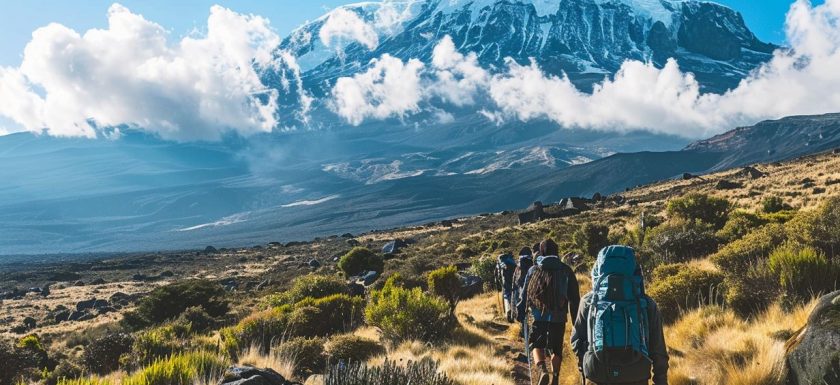
Are you considering trekking up Mount Kilimanjaro but don’t know which route to take?
This article will guide you through the factors to consider when choosing a route, including physical difficulty, scenery, crowds, cost, and duration. We will then explore the most popular routes such as Machame, Lemosho, Marangu, Rongai, and Umbwe, providing comparisons on distance, elevation gain, success rates, accommodation, and highlights.
By the end, you’ll have all the information you need to make an informed decision for your Kilimanjaro adventure.
Key Takeaways:
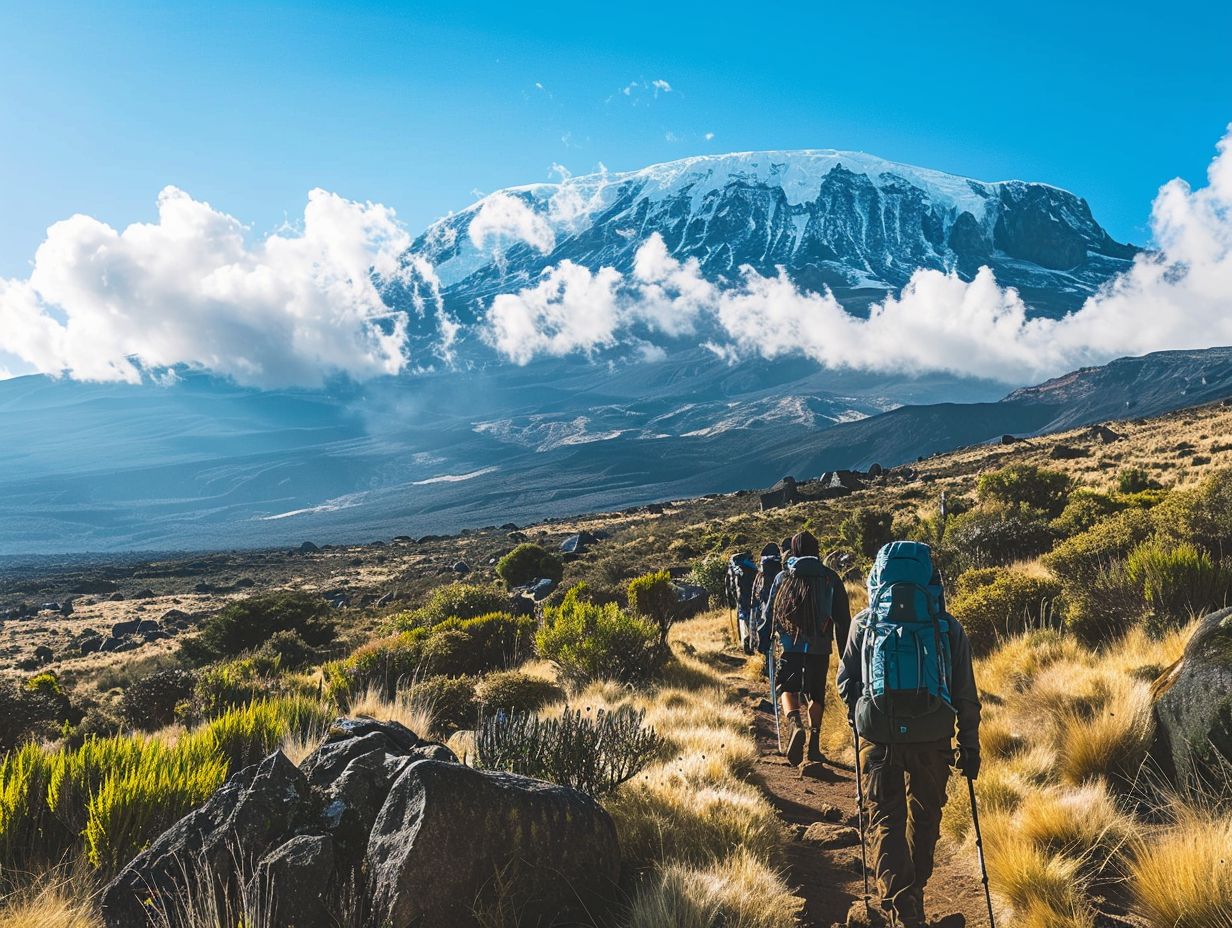
- Choose a Kilimanjaro route based on physical difficulty, scenery and views, crowds, cost, and duration.
- The most popular routes are Machame, Lemosho, Marangu, Rongai, and Umbwe.
- Consider factors like distance, elevation gain, success rates, accommodation, facilities, and scenery when comparing popular routes.
The Most Popular Kilimanjaro Routes
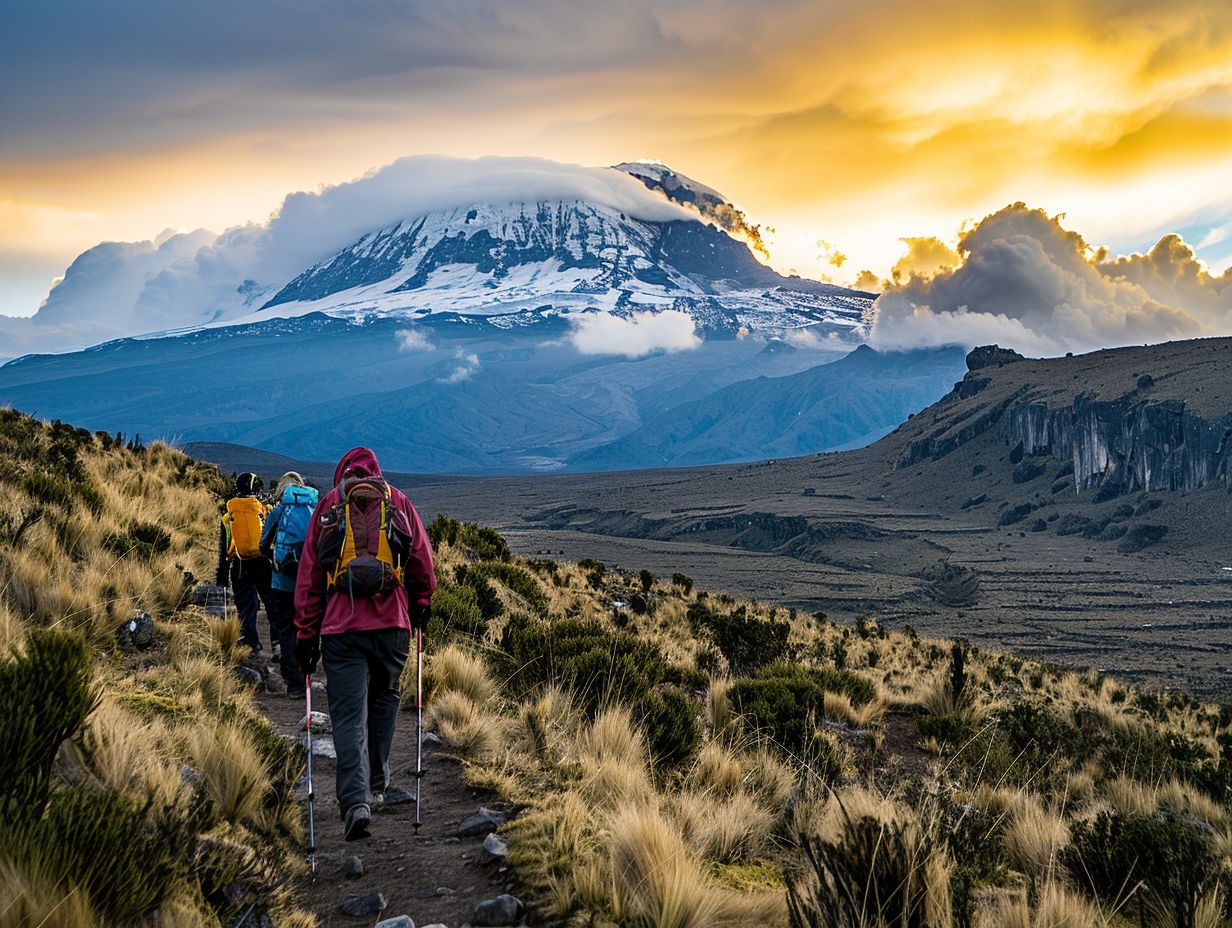
Among the most popular Kilimanjaro routes are Machame, Lemosho, Marangu, Rongai, and Umbwe. Each route offers a unique journey with its challenges and highlights.
Starting with the Machame route, it is renowned for its stunning scenery as it traverses through diverse landscapes encompassing lush rainforest, moorlands, and alpine desert. This route is often favored for its gradual climb which aids in acclimatization, making it one of the most scenic paths on the mountain.
The Lemosho route, on the other hand, is known for its scenic beauty and solitude, offering a more remote and less crowded experience. Passing through unspoiled rainforest and crossing the scenic Shira Plateau, it gradually merges with the Machame route offering a diverse range of landscapes.
Machame Route
The Machame Route is renowned for its stunning scenery and relatively high success rate in reaching the summit. Climbers often appreciate the diverse landscapes and the challenging summit night experience.
One of the key highlights of the Machame Route is its gradual ascent that allows for better acclimatization, increasing the chances of a successful summit attempt. With its breathtaking views of the Uhuru Peak, the highest point on Mount Kilimanjaro, climbers are motivated to push through the demanding final push.
The summit night poses a significant challenge due to the high altitude and steep terrain, testing climbers’ physical and mental resilience. The experienced guides and well-established camps along the route help minimize risks and maximize safety.
Lemosho Route
The Lemosho Route is known for its scenic beauty and wilderness experience, offering climbers a chance to explore diverse ecosystems and culminating at the spectacular Crater Camp near the summit.
One of the distinctive aspects of the Lemosho Route is its rich variety of flora and fauna, with lush rainforests giving way to alpine meadows as climbers ascend, providing a truly immersive hiking experience.
The route also boasts stunning views of iconic landmarks such as Shira Plateau and Barranco Wall, adding to the allure of the journey. Ascending through different ecological zones, climbers encounter unique species like the endemic Kilimanjaro tree, adding to the route’s ecological significance.
Marangu Route
The Marangu Route, also known as the ‘Coca-Cola Route,’ offers comfortable hut accommodations and a relatively gradual ascent. Safety precautions and well-established facilities make it a popular choice for many climbers.
One of the distinctive features of the Marangu Route is its unique hut accommodations that provide climbers with a cozy retreat after a day of trekking. These huts offer a level of comfort not found on other routes, allowing climbers to rest and recharge for the next day’s journey.
The gradual ascent of the Marangu Route helps trekkers acclimatize effectively, reducing the risk of altitude-related issues.
The safety measures along the route, including experienced guides and well-marked trails, ensure that climbers can focus on the breathtaking views and their personal achievements without worrying about unnecessary risks. The availability of amenities such as dining halls and flushing toilets adds a touch of convenience to the overall trekking experience.
Rongai Route
The Rongai Route, known for its peaceful atmosphere and breathtaking scenery, approaches Kilimanjaro from the north. It offers opportunities for acclimatization and reaches the summit through the Northern Circuit.
One of the defining characteristics of the Rongai Route is its tranquility, making it a favored choice for those seeking a more serene trek up the iconic Kilimanjaro. The route features a gradual ascent, allowing trekkers to acclimatize gradually and thereby reducing the risk of altitude-related problems.
The Northern Circuit, a less crowded path, provides a unique perspective of the mountain, with its vast, untouched landscapes and awe-inspiring panoramic views stretching as far as the eye can see. This longer itinerary not only enhances the overall experience through diverse terrains but also increases the chances of successful summit attempts.
Umbwe Route
The challenging Umbwe Route is known for its steep ascent and direct approach to the summit. Climbers can enjoy views of Mount Meru and the Shira Plateau during the ascent, with the route offering a high summit success rate for experienced climbers.
One of the most striking aspects of the Umbwe Route is its rugged trail that demands both physical endurance and mental strength from climbers. The steep terrain presents a thrilling yet arduous challenge, requiring careful footing and navigation through rocky paths and dense vegetation.
Experienced climbers are drawn to the route’s technical difficulties and the exhilarating feeling of conquering such a demanding ascent.
As climbers ascend the slopes, they are rewarded with breathtaking panoramic scenic viewpoints that showcase the beauty of the surrounding landscapes. From glimpses of the majestic Mount Meru to sweeping vistas of the expansive Shira Plateau, the route provides a sensory feast for those brave enough to tackle its formidable obstacles.
Comparison of the Popular Routes
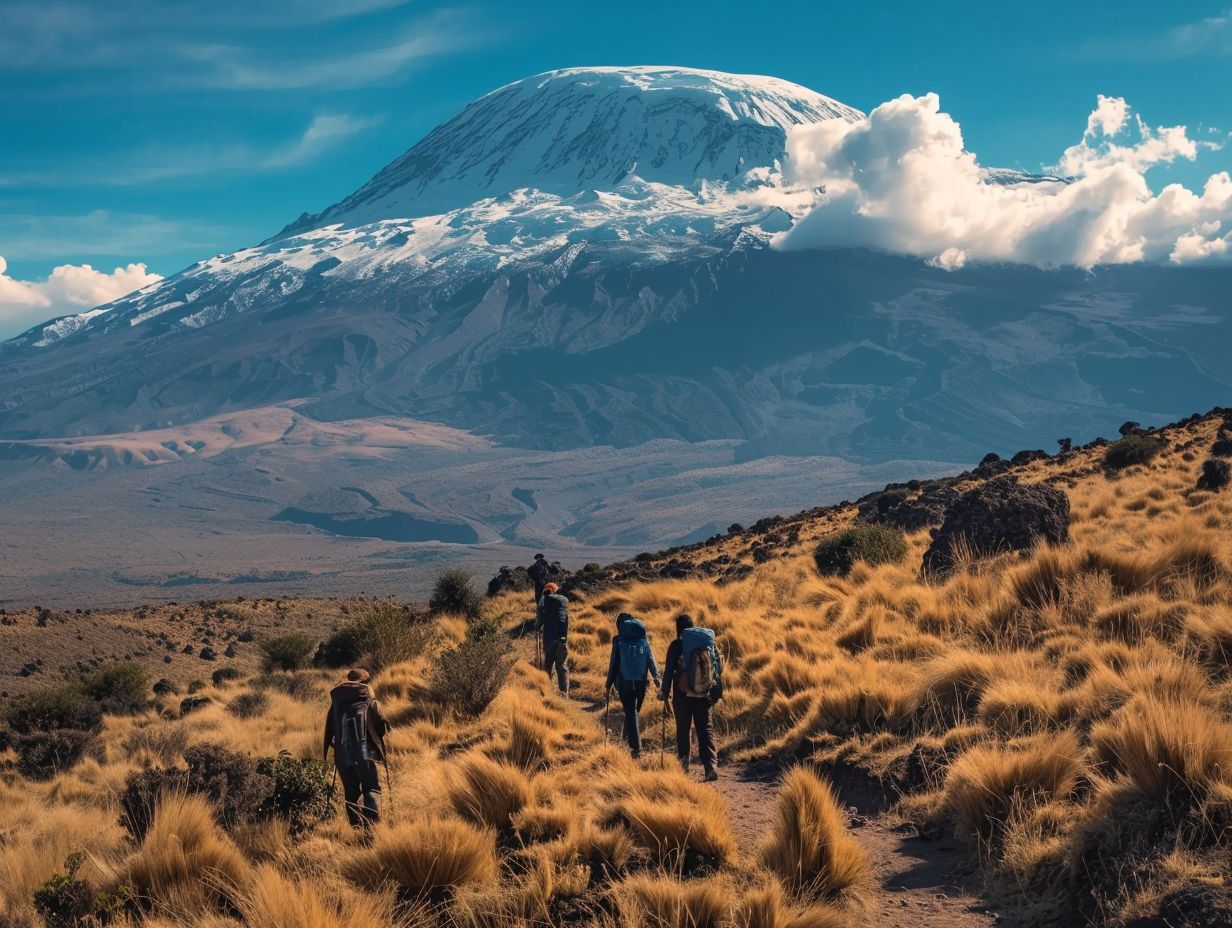
A comparison of the popular Kilimanjaro routes reveals variations in distance, elevation gain, success rates, accommodation options, and scenic highlights. Understanding these differences can help climbers choose the route that best suits their preferences and capabilities.
For those seeking a challenging trek, the Lemosho route stands out with its longer distance and gradual ascent, allowing for better acclimatization. On the other hand, the Marangu route, known as the ‘Coca-Cola’ route, provides more comfortable lodges but has a higher traffic volume due to its popularity.
The Machame route, often called the ‘Whiskey’ route, offers stunning views of both the Shira Plateau and Barranco Wall, making it a favorite among many adventurers. These distinctions in difficulty, amenities, and vistas make each route a unique experience for climbers.
Distance and Elevation Gain
The distance covered and elevation gain on Kilimanjaro routes vary significantly, affecting the overall climbing experience and acclimatization process. Understanding the terrain and altitude changes can prepare climbers for the challenges ahead.
For example, the Marangu route, also known as the ‘Coca-Cola’ route, spans approximately 65 kilometers with an elevation gain of around 4,900 meters. This route is known for its gradual ascent, providing climbers with more time to acclimatize to the altitude.
On the other hand, the Machame route covers about 62 kilometers and features a higher elevation gain of 5,895 meters. The steep terrain and rapid altitude changes on this route make it more challenging, requiring climbers to be in good physical condition.
Success Rates
Success rates on Kilimanjaro routes can vary based on factors such as altitude, acclimatization, and route difficulty. Routes with higher success rates often prioritize gradual ascents and proper acclimatization strategies.
Altitude management plays a crucial role in determining the success of summit attempts, as the body needs time to adapt to the decreasing oxygen levels at higher altitudes. Route-specific challenges, such as the Barranco Wall on the Machame Route or the Western Breach on the Lemosho Route, require different skill sets and levels of experience.
For instance, the Marangu Route, known as the ‘Coca-Cola’ route for its popularity, has a lower success rate due to its rapid ascent compared to the more gradual approaches like the Lemosho or Machame routes.
Accommodation and Facilities
Accommodation options and facilities along Kilimanjaro routes vary from basic campsites to comfortable huts with amenities. Safety measures, rest points, and emergency services play a crucial role in climbers’ experiences.
When choosing a route up Kilimanjaro, climbers should consider their comfort level and preferred amenities. For those seeking a more rugged experience, basic campsites are available along some paths, providing a minimalist approach to shelter. On the other hand, well-equipped huts offer a higher level of comfort with bedding, dining areas, and sometimes even hot showers.
While the basic campsites offer a more authentic experience in nature, huts provide a sense of luxury amidst the challenging trek. These differences in accommodations cater to a wide range of preferences among climbers, ensuring that each individual can find a suitable place to rest and recharge during their journey.
Scenery and Highlights
The scenic beauty and natural highlights on Kilimanjaro routes showcase the diversity of landscapes and iconic landmarks like Mount Kilimanjaro. Each route offers unique experiences that appeal to climbers seeking adventure and exploration.
One of the most iconic routes, the Marangu route, is often popular due to its moderate difficulty level and the option of sleeping in huts along the way, providing a more comfortable journey.
The Lemosho route, on the other hand, is known for its stunning panoramic views and diverse ecosystems, ranging from lush rainforests to alpine deserts, offering a true mix of natural beauty.
Conclusion
Choosing the right Kilimanjaro route is a critical decision that impacts your climb’s success, summit experience, and overall safety.
When considering Kilimanjaro routes, it’s essential to focus on factors like success rates, acclimatization strategies, and safety precautions. Opting for a route with a higher success rate can boost your chances of reaching the summit. Incorporating proper acclimatization days into your itinerary is crucial for adapting to the altitude and minimizing the risk of altitude sickness.
Thorough planning and preparation are key elements of a successful Kilimanjaro climb. This includes selecting a reputable tour operator, packing appropriate gear, and training adequately to enhance your physical fitness. Safety precautions such as staying hydrated, pacing yourself, and following the guidance of experienced guides are paramount for a safe and enjoyable trek.
Frequently Asked Questions
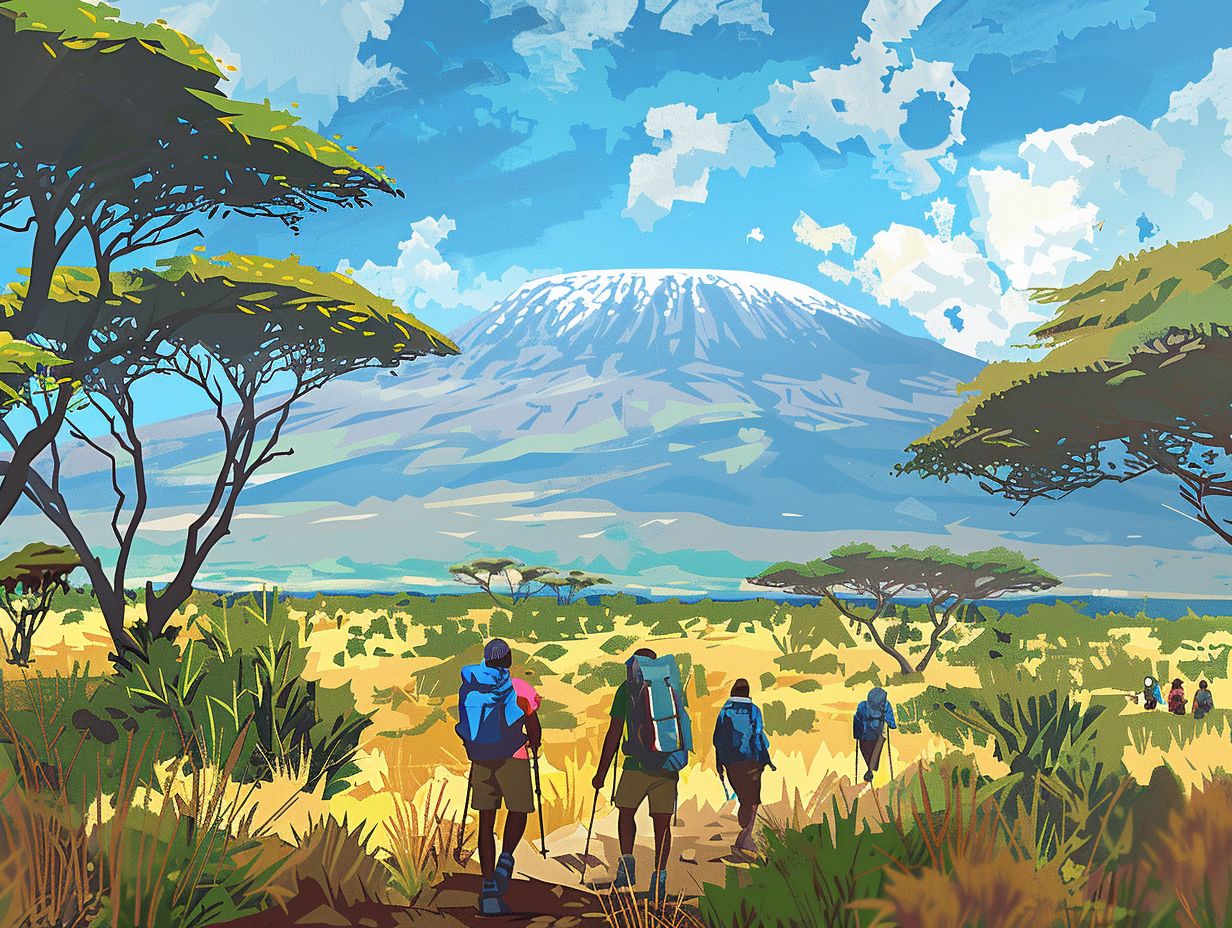
What is the most popular Kilimanjaro route?
The most popular Kilimanjaro route is the Marangu route. It is also known as the “Coca-Cola” route due to its well-maintained huts and availability of soft drinks along the way.
Why is the Marangu route considered the most popular?
The Marangu route is considered the most popular due to its gradual ascent, making it suitable for novice climbers. It is also the only route that offers accommodation in huts instead of tents, providing a more comfortable experience.
How long does it take to complete the Marangu route?
The Marangu route typically takes 5-6 days to complete. However, some operators offer a 4-day option, which is not recommended as it increases the risk of altitude sickness.
What is the success rate for climbers on the Marangu route?
The success rate for climbers on the Marangu route is approximately 65%. This is due to its popularity and relatively easier terrain, which attracts inexperienced climbers who may struggle with the altitude.
Are there other popular routes besides Marangu on Kilimanjaro?
Yes, there are several other popular routes on Kilimanjaro, including Machame, Lemosho, and Rongai. These routes offer more diverse landscapes and a higher success rate, but require a higher level of fitness and endurance.
What is the best time to climb Kilimanjaro on the most popular route?
The best time to climb Kilimanjaro on the most popular route, Marangu, is during the dry season from July to October. This offers the best weather and visibility, increasing the chances of a successful summit.